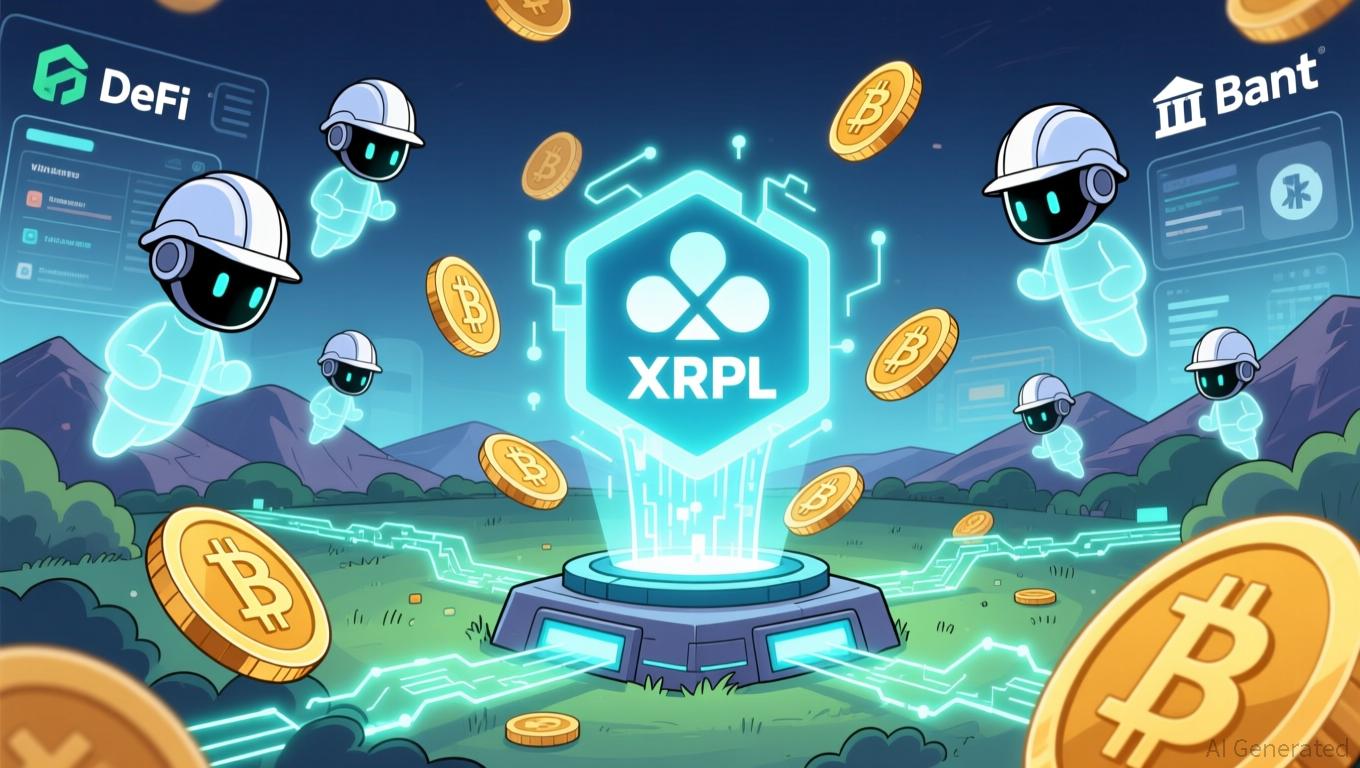XRP News Today: Ripple Faces a Staking Dilemma on the XRP Ledger: Balancing Trust and Incentive Conflicts
- Ripple explores XRP Ledger staking to boost DeFi integration and institutional use. - CTO David Schwartz outlines two staking models, but implementation is distant due to architectural complexity. - Staking aims to enhance security and incentivize token holders, aligning with crypto trends while addressing bank needs for cost efficiency and compliance. - Ripple also seeks Fed account access to improve RLUSD stability, leveraging direct Treasury conversions for faster settlements.
Ripple (XRP) is considering adding staking capabilities to its
The suggested staking models are designed to improve XRPL’s security and encourage token holders to participate over the long term. One proposal features a two-tier consensus approach: an inner validator group, chosen by stake, would handle ledger updates with slashing and staking, while an outer group would focus on governance. The alternative would keep the current Proof of Association system but use transaction fees to support zero-knowledge proof (ZKP) verification, allowing for more trustless validation.

Ripple’s investigation into staking reflects a wider movement in the crypto sector, where staking is now central to network security and user participation. For the banking sector, the advantages are evident: staking could lower operational expenses, boost transparency, and make cross-border payments more efficient—areas where XRP already has a foothold. J. Ayo Akinyele, who leads engineering at RippleX, believes staking could transform the incentives for both validators and token holders, creating a stronger ecosystem.
This move is particularly timely. Earlier this month, Ripple’s chief legal officer, Stu Alderoty, expressed support for a Federal Reserve proposal that would allow crypto companies to access so-called “skinny” Fed accounts. Such access could let stablecoin providers like Ripple bypass conventional banks, speeding up settlements and cutting costs.
Although staking on XRPL is still in the conceptual stage, Ripple’s emphasis on regulatory compliance and operational improvements highlights its goal to connect traditional finance with DeFi. For banks, Ripple’s offerings—from cross-border payment solutions to possible staking features—provide tools to adapt to a financial world increasingly influenced by digital assets. As the Fed’s proposed payment system changes progress, Ripple’s technological flexibility may shape its future role in financial innovation.
Disclaimer: The content of this article solely reflects the author's opinion and does not represent the platform in any capacity. This article is not intended to serve as a reference for making investment decisions.
You may also like
Fed's Split Opinions and Incomplete Data Obscure Prospects for Rate Reduction
- Fed's December rate cut odds drop to 39.6% due to missing October jobs data and inflation uncertainty. - Market jitters rise as gold falls, dollar strengthens, and crypto faces pressure amid policy uncertainty. - Fed factions debate inflation control vs labor support, with CME pricing 44% chance of 25-basis-point cut. - Central bank plans to end quantitative tightening in December, but data gaps complicate policy calibration. - 2026 may see slower easing cycle as investors monitor November payrolls and F

$40K Gas Fee Turns Into $1M Gain: Jesse Token Sniping Highlights Barriers to Entry in Crypto
- An address paid $40K in gas fees to secure 7.6% of Jesse token, netting $1M profit after selling its stake. - The "scientist" actor exploited advanced tools to front-run Jesse's token sale, highlighting DeFi's competitive "sniping" dynamics. - High gas fees and technical barriers concentrate token sale opportunities among well-resourced participants, raising accessibility concerns. - Jesse token's launch, led by Base co-founder, reflects broader crypto trends where strategic timing and resources drive sp

Bitcoin's Latest Price Fluctuations and Growing Institutional Interest: Optimal Timing for Investment as Regulations Become Clearer and Economic Conditions Evolve
- Bitcoin's 2025 volatility reflects institutionalization, with $11B in Q3-Q4 2025 ETF inflows and corporate buyers like MicroStrategy accumulating BTC. - Regulatory clarity via the GENIUS Act and Tether's Latin American expansion accelerated institutional adoption, despite U.S. state-level restrictions creating short-term uncertainty. - Macroeconomic tailwinds including Fed rate cuts and $96T global M2 money supply supported Bitcoin's $200,000 price target, lowering capital costs for long-term holdings. -
Solana’s Latest Price Rally: Could This Signal the Beginning of Another Bull Market?
- Solana's 2025 upgrades (Firedancer, Alpenglow, ZK Compression v2) enhance scalability to 1M TPS and reduce costs by 5,200x, positioning it for institutional adoption. - Institutional partnerships with Western Union (USDPT), Google Cloud, and ETFs (BSOL/GSOL) drive $111M inflows and validate Solana as a financial infrastructure backbone. - While SOL trades at $141 under bearish pressure, technical upgrades and real-world use cases suggest long-term growth potential beyond speculative trading cycles.